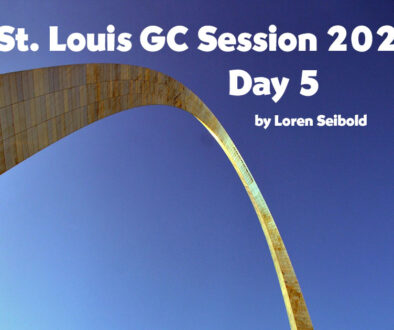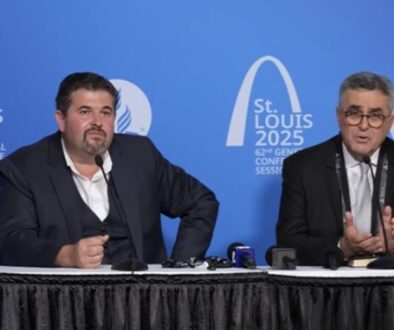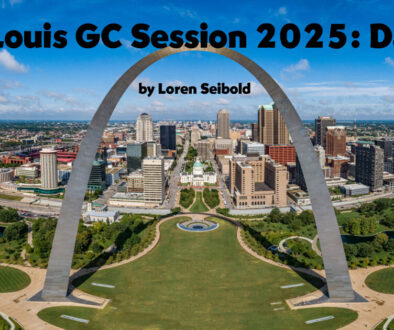Silver Spring and Rome
by Gerard Frenk, May 5, 2016: One of the most impressive books written by the German priest and psychoanalist, Eugen Drewermann is Kleriker: Psychogramm eines ideals (original German edition published by Walter Verlag in 1989). The title needs no translation. In the book Drewermann traces the psychogenesis of “the Roman Catholic priest” and those in the church who have entered an order. It is at times a frightening mirror for one who has spent more than 30 years of his life as an Adventist minister.
In one of the chapters Drewermann looks at the function and role of the oath or vow in the relationship between the priest and the Roman Catholic Church. I found that the passage is highly illuminating when thinking about the constraints on academic freedom, the role of the extensive baptismal vow and recent changes in the fundamental beliefs within the Adventist Church.
Organizational continuity
Every organization which aims to affect its environment and seeks continuity of both membership and declared aims needs to address the question of how such continuity may best be attained. How does an organization remain focused in the face of the freedom of its members to choose otherwise? Drewermann argues that every group that has addressed this dilemma has chosen the way of internalized violence. It may be useful to define the term and its antonym.
External violence is the use of authority and power to achieve the aims of one group at the expense of another by imposing belief systems, values and mores. Internalized violence occurs when the second group comes to believe and act as if the imposed beliefs system, values, and life way is (the only possible) reality.
Within a denominational context the relationship between the two is complicated by the fact that the perceived will of God enters the equation. When one of the tasks of leadership is thought to be the defense of the will of God, authority runs the risk of becoming authoritarian. That danger is most present when leaders confuse the will of God with the revealed historical stance of the denomination. It is within such contexts that external violence tends to become the instrument of control.
Continuity, then, is achieved by limiting the freedom of the individual, be he member, pastor or academic. He needs to be “voluntarily” bound and is usually brought into this position by means of a promise or ritual vow. A term such as baptismal vow, therefore, is not neutral. It is a means of external control. The content of the vow is meant to encourage the perception of freedom as a regulated freedom. It is a freedom marked by loyalty and bound by a confession in doctrinal form. Most churches, and certainly the Adventist Church, do not only baptize individuals in the name of the Father, Son and Holy Ghost; they grant baptism and membership on the basis of a denominational confession.
Idolatry
Drewermann argues that control by way of a vow is highly unbiblical. It is, in fact, idolatrous because it is born out of fear for a “penultimate concern by means of an ultimate vow.” It undermines the God-given freedom of the person who is asked to swear, vow or confess to more than faith in God. Because human beings live in space and time, both of which are spheres of growth and change, the oath or promise is in fact an attempt to freeze time and thus deny the individual a natural development.
It seems to me that this is clearly the case in current Adventism. Leadership makes use of a narrowly defined and exclusive hermeneutic to push changes in the fundamental beliefs and in the Church Manual. The boundaries within which one can claim to be a “true Adventist” are increasingly drawn by means of majority vote. Full use is thereby made of the power to set the agenda and formulate proposed changes. The continuity and identity of the church are perceived to be in danger and all the weapons of church authority are needed to win the battle. Ted Wilson, current world president of the denomination, has described the battle as follows:
Throughout the course of human history and against relentless satanic attack, God has preserved His Holy Word. The Bible contains an accurate account of our origins, a reliable record of our salvation, and a glorious glimpse at our soon coming deliverance. As Seventh-day Adventists, we accept the Bible as the foundation for all our beliefs and see in its pages our unique prophetic identity and mission.
Seventh-day Adventist Church members, hold your leaders, pastors, local churches, educators, institutions, and administrative organizations accountable to the highest standards of belief based on a literal understanding of Scripture. Utilize wonderful resources such as the Biblical Research Institute’s new book on hermeneutics that helps us know the correct way to interpret the Scriptures.
As worded, this perception is driven by a narrowly defined and exclusive hermeneutic. It was formulated in the eighties of the last century and brought before the 1986 Annual Council of church leaders as a report by the Methods of Bible Study Committee. The report was later published as an official statement of the church. That does not make it into doctrine, yet Church leadership currently presents it as the only possible way to read and explain the Bible. It is apparently to be assented to by every member of the Adventist Church, especially its ministry and scholars.
The sad thing is that this approach to scripture leads to an objectification and externalization of faith. For instance, the most important thing that is said about creation in the document is the following:
Scripture is an authentic, reliable record of history and God’s acts in history. It provides the normative theological interpretation of those acts. The supernatural acts revealed in Scripture are historically true. For example, chapters 1-11 of Genesis are a factual account of historical events (Methods of Bible Study).
The recent expansion of Fundamental Belief Number 6 during the General Conference of 2015 is also the result of a narrow and rigorous application of the “approved” method.
God has revealed in Scripture the authentic and historical account of His creative activity. He created the universe, and in a recent six-day creation the Lord made “the heavens and the earth, the sea, and all that is in them” and rested on the seventh day. Thus He established the Sabbath as a perpetual memorial of the work He performed and completed during six literal days that together with the Sabbath constituted the same unit of time that we call a week…(Fundamentals of Faith 2015)
The expansion clearly has a twofold aim. First, the description of creation in scripture is described as an historical account. This formulation is meant to make sure that it occurred exactly as described. Second, the adjectives recent and literal are added to the words of Exodus 20:11 to buttress what is conceived of as the only possible literal reading of the Genesis text.
Adventist believers are now being asked to confess that Genesis 1 is scientifically and historically and objectively true. Nowhere in the statement can an existential component be found. It is useful to quote Drewermann at this point. Objectification and externalization of religious content lead inevitably to “a structural and constant compulsion to compensate failing argument by the use of administrative force” (page 130, Dutch edition). Therefore, statements, rules and regulations, and majority decisions are all brought into position to win the day. The degree of political and ecclesiastical maneuvering are directly related to the degree of abstract formalism of the official doctrine.
The use of such administrative weaponry is deemed necessary by leadership as a defense of pure and biblical faith. There is a war to be fought on the field of dogmatics and it is the “world” that is the cause of that conflict. “The cause of the existing discrepancy between dogma and reality is to be found in reality: people are to blame for the fact that ecclesiastical representations of what reality is are increasingly difficult to translate and communicate” (page 130). “The less a certain vision is able to penetrate reality, the more certain it is that the holder of reality will take an independant position with regard to the content of each doctrine and as a consequence it becomes necessary for leadership to compensate the lack of persuasive power by means of force”(page 131, Dutch Edition).
The appeal to history and tradition
In a further effort to bolster its position and as legitimation of its perceived role, church leadership frequently appeals to the history and tradition of the church. Sermons and other forms of communication are replete with references to the past. The past is glorified and presented as the source to which all need be true. Church leaders are by implication mediators of the past, protectors of the tradition, guardians of the fundamentals and defenders of the pillars of faith. It is therefore deeply ironic that current General Conference leadership exhibits great aversion to real historical thinking. The thought that change and mutability are part of all phenomena that occur in time and space is clearly threatening.
A sobering comparison
It is highly enlightening to compare the current direction of General Conference Adventism with the road travelled by the Roman Catholic Church in the relatively recent past.
During his pontificate Pope Pius X (pontificate 1903-1914) issued two documents which were meant to keep the church tied to its past. The first, the encyclical Pascendi gregis (1907), condemned all attempts at dogmatic renewal, doctrinal development and the rise of critical methods of inquiry. It contained a long list of errors, Lamentabili sane exitu, condemning 65 modernist mistakes about Scripture and Catholic doctrine. The effect of Pius’s action was the strangulation of critical Catholic scriptural and historical studies. In 1910 this pope insisted on an oath for those seeking ordination – the so called antimodernist oath, the Motu proprio sacrarum antistitum. The oath became part of Canon Law from 1910 until the Canon was revised in 1967. In that last year the antimodernist stipulations were removed. However, teachers in the Roman Catholic Church were still required to profess not only the Nicean Creed but also the following:
I firmly embrace and retain each and every thing which has been proposed by the church regarding the teaching of faith and morals, whether defined by solemn judgment or asserted and declared by the ordinary magisterium, especially those things which concern the mystery of the holy church of Christ and its sacraments and the sacrifice of the Mass and the primacy of the Roman pontiff.
Roughly twenty years later, in 1989 that sentence was replaced by three sentences clearly meant to strengthen the whip hand of central authority.
The first sentence reads:
With firm faith I believe as well everything contained in God’s word, written or handed down in tradition and proposed by the church — whether in solemn judgment or in the ordinary and universal magisterium as divinely revealed and calling for faith
The second sentence requires further assent to:
I also firmly accept and hold each and every thing (omnia et singula) that is proposed by that same church definitively (definitive) with regard to teaching concerning faith and morals.
The third and most disturbing sentence reads:
What is more, I adhere (adhaereo) with religious submission of will and intellect (religioso voluntatis et intellectus obsequio) to the teachings which either the Roman pontiff or the college of bishops enunciate when they exercise the authentic magisterium even if they proclaim those teachings in an act that is not definitive.
Even this proved inadequate to still the fears of the Vatican, and in 1998 the apostolic letter Ad Tuendam Fidem saw the light, signed by Pope John Paul II. It was addressed to those who receive an office, that is directly or indirectly related to deeper investigation into the truths of faith and morals, or is united to a particular power in the governance of the Church. They were to be called to heel by the addition of a second paragraph to Canon 750.
Prior to 1998 that Canon consisted of one paragraph. – 1. Those things are to be believed by divine and catholic faith which are contained in the word of God as it has been written or handed down by tradition, that is, in the single deposit of faith entrusted to the Church, and which are at the same time proposed as divinely revealed either by the solemn Magisterium of the Church, or by its ordinary and universal Magisterium, which in fact is manifested by the common adherence of Christ’s faithful under the guidance of the sacred Magisterium. All are therefore bound to avoid any contrary doctrines.
Now a second paragraph is added which makes clear what is meant when the teacher professes that he firmly accepts and holds each and every thing that is proposed by that same church definitively with regard to teaching concerning faith or morals.
2. Furthermore, each and everything set forth definitively by the Magisterium of the Church regarding teaching on faith and morals must be firmly accepted and held; namely, those things required for the holy keeping and faithful exposition of the deposit of faith; therefore, anyone who rejects propositions which are to be held definitively sets himself against the teaching of the Catholic Church.
The teacher is being asked to submit his “religious” will and intellect to the magisterium of the church. Whatever the church teaches and proposes in the realms of doctrine and morals must be held and taught.
It would be well if Adventist leadership at the General Conference would spend some time reading Drewermann and the 20th-century history of the Roman Catholic Church. It could help prevent creeping tendencies in the same direction.
Gerard Frenk is a retired pastor and church administrator living in Amersfoort, The Netherlands.




